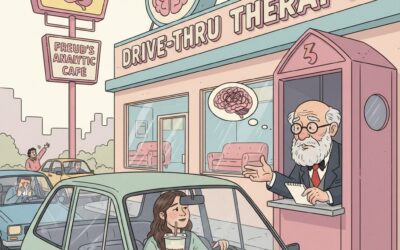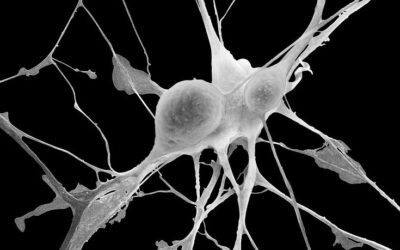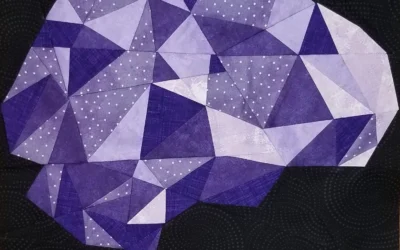Can Psychotherapy Treat POTS and Dysautonomia?
Postural Orthostatic Tachycardia Syndrome (POTS) and dysautonomia are complex conditions that significantly impact the lives of those affected. These disorders of the autonomic nervous system cause a wide range of physical symptoms, but their effects extend far beyond the purely physiological realm. Living with POTS and dysautonomia presents unique challenges that affect both body and mind, requiring a holistic therapeutic approach that addresses not just the tangible symptoms, but also the profound psychological and emotional dimensions of chronic illness (Damasio, 2000; Shore, 1994).
The Autonomic Nervous System: A Neuroscientific Perspective
To fully grasp the multifaceted nature of POTS and dysautonomia, it is essential to understand the critical role of the autonomic nervous system (ANS) in both physical regulation and emotional processing. As leading neuroscientist Antonio Damasio (2000) explains, the ANS is deeply intertwined with the subcortical brain regions that govern our survival instincts, stress responses, and emotional experiences. This intricate connection between the ANS and the emotional centers of the brain sheds light on why autonomic dysfunction can have such profound psychological effects.
Expanding on this idea, psychiatrist Allan Shore (1994) describes how the ANS is central to the regulation of the “core self”, the primary emotional and somatic sense of oneself. Disturbances in autonomic function, then, can disrupt this core sense of self, leading to feelings of disconnection, anxiety, and emotional dysregulation. Shore’s work underscores the importance of addressing the emotional dimensions of POTS and dysautonomia as an integral part of treatment.
The Triune Brain and Autonomic Dysfunction
Paul MacLean’s (1990) concept of the triune brain offers another useful framework for understanding the multilayered effects of autonomic dysfunction. According to MacLean, the human brain consists of three interconnected systems: the reptilian brain (responsible for basic survival functions), the limbic system (involved in emotional processing), and the neocortex (governing higher-order thinking and reasoning).
In the context of POTS and dysautonomia, disturbances in the autonomic nervous system can be seen as a disruption of the delicate balance between these three neural systems. When the reptilian brain’s survival mechanisms are constantly activated due to autonomic dysfunction, it can lead to chronic stress and hyperarousal, which in turn impacts the emotional regulation of the limbic system and the cognitive functions of the neocortex (Payne et al., 2015). This understanding helps explain why patients with POTS and dysautonomia often experience a complex interplay of physical symptoms, emotional challenges, and cognitive difficulties.
Confronting the Shadow: The Emotional Journey of Chronic Illness
The unpredictable and often debilitating nature of POTS and dysautonomia can trigger what Carl Jung (1968) would call a “confrontation with the shadow” – a deep psychological reckoning with the painful realities and limitations imposed by chronic illness. As patients navigate the daily challenges of managing symptoms, they are forced to confront aspects of themselves that they may have previously ignored or denied, such as vulnerability, dependence, and mortality.
This confrontation with the shadow can be a profoundly destabilizing experience, challenging one’s sense of identity, purpose, and control. As existential psychotherapist James Hollis (2013) notes, chronic illness often precipitates a crisis of meaning, as patients grapple with questions of suffering, identity, and the fragility of life itself. Yet, as Hollis emphasizes, this crisis can also be a catalyst for deep personal growth and transformation – what Jung termed “individuation” (cited in Hollis, 2013).
The Stages of Grief in Chronic Illness
The emotional journey of living with POTS and dysautonomia often parallels the stages of grief identified by Elisabeth Kubler-Ross (1969) in her groundbreaking work on death and dying. Just as individuals facing terminal illness move through stages of denial, anger, bargaining, depression, and acceptance, patients with chronic autonomic disorders may experience a similar emotional progression as they come to terms with their condition.
However, as Stroebe and Schut (1999) point out in their dual process model of coping with bereavement, the grieving process is rarely linear or predictable. Patients with POTS and dysautonomia may find themselves oscillating between periods of intense emotional struggle and moments of resilience and acceptance. This oscillation between loss-oriented and restoration-oriented coping is a natural part of the healing process, reflecting the complex and ongoing nature of living with chronic illness.
Therapeutic Approaches for Managing POTS and Dysautonomia
Given the multifaceted nature of POTS and dysautonomia, effective treatment often requires a multidisciplinary approach that combines various therapeutic modalities. Somatic Experiencing, developed by Peter Levine (1997), is one such approach that has shown promise in helping patients develop greater awareness and regulation of their autonomic nervous system. By working with the body’s innate capacity for self-regulation, Somatic Experiencing can help patients build resilience and reduce the impact of stress and trauma on the ANS.
Quantitative Electroencephalography (QEEG) Brain Mapping is another valuable tool in understanding the neural patterns associated with POTS and dysautonomia (Nelson et al., 2007). By providing a detailed map of brain activity, QEEG can help identify areas of dysregulation and guide targeted interventions such as neurofeedback training. Neurofeedback, which involves training the brain to self-regulate through real-time feedback, has shown promise in improving autonomic function and reducing symptoms in patients with POTS and other autonomic disorders (Feuerstein et al., 2008).
Mindfulness-based interventions, as discussed extensively in the literature on meditation and mindfulness (Kabat-Zinn, 2003), can also be powerful tools for managing the physical and emotional challenges of POTS and dysautonomia. By cultivating present-moment awareness and non-judgmental acceptance of one’s experience, mindfulness practices can help patients develop what psychoanalyst Donald Winnicott (1971) called a “holding environment” – an internal sense of safety and stability in the face of physical and emotional distress.
The Importance of Ritual and Routine
In addition to formal therapeutic interventions, the incorporation of daily rituals and routines can provide much-needed structure and stability for those managing POTS and dysautonomia. Drawing on insights from anthropological perspectives on healing (Turner, 1969), the creation of meaningful rituals can help patients find a sense of order and purpose in the midst of the chaos and uncertainty of chronic illness.
As medical anthropologist Arthur Kleinman (1988) notes, rituals serve to “create meaning, establish order, and provide coherence to the human condition” (p. 49). For patients with POTS and dysautonomia, daily rituals such as gentle movement practices, structured rest periods, and self-care routines can help anchor the self in a sense of predictability and control, even as symptoms fluctuate.
Moving Forward
Hope and Healing on the Horizon While the challenges of living with POTS and dysautonomia are undeniably profound, the growing understanding of these conditions and the development of holistic therapeutic approaches offer hope for better management and improved quality of life. By integrating both traditional and innovative treatment methods, and by recognizing the deep interconnections between the physical, psychological, and emotional dimensions of these disorders, healthcare providers can support patients in navigating the complex journey of healing.
Ultimately, as psychotherapist Thomas Moore (1992) reminds us, the path to wholeness in the face of chronic illness requires a deep “care of the soul” – an attentiveness to the full spectrum of human experience, from the physical to the spiritual. By honoring the multifaceted nature of POTS and dysautonomia, and by supporting patients in their search for meaning and resilience, we can help light the way toward a future of greater understanding, compassion, and healing.
Treating Pots and Dysautonomia in Alabama
To treat POTS or Dysautonomia in Alabama please contact Pamela Hayes at [email protected].
Bibliography
Damasio, A. R. (2000). The feeling of what happens: Body and emotion in the making of consciousness. Harcourt Brace.
Feuerstein, M., Hirshman, H., Zitman, D., & Devinsky, O. (2008). Neurofeedback in posttraumatic stress disorder: A single case study. Applied Psychophysiology and Biofeedback, 33(1), 39-49.
Hollis, J. (2013). Hauntings: Dispelling the ghosts who run our lives. Chiron Publications.
Jung, C. G. (1968). The archetypes and the collective unconscious (2nd ed.). Princeton University Press.
Kabat-Zinn, J. (2003). Mindfulness-based interventions in context: Past, present, and future. Clinical Psychology: Science and Practice, 10(2), 144-156.
Kleinman, A. (1988). The illness narratives: Suffering, healing, and the human condition. Basic Books.
Kubler-Ross, E. (1969). On death and dying. Macmillan.
Levine, P. A. (1997). Waking the tiger: Healing trauma. North Atlantic Books.
MacLean, P. D. (1990). The triune brain in evolution: Role in paleocerebral functions. Springer Science & Business Media.
Moore, T. (1992). Care of the soul: A guide for cultivating depth and sacredness in everyday life. HarperCollins.
Nelson, K. L., Purdy, M. K., & Wilkerson, K. D. (2007). Quantitative electroencephalographic brain mapping and neuropsychological performance in postural orthostatic tachycardia syndrome. Journal of Neurotherapy, 11(4), 55-72.
Payne, P., Levine, P. A., & Crane-Godreau, M. A. (2015). Somatic Experiencing: Using interoception and proprioception as core elements of trauma therapy. Frontiers in Psychology, 6, 93.
Schore, A. N. (1994). Affect regulation and the origin of the self: The neurobiology of emotional development. Erlbaum.
Stroebe, M. S., & Schut, H. (1999). The dual process model of coping with bereavement: Rationale and description. Death Studies, 23(3), 197-224.
Turner, V. (1969). The ritual process: Structure and anti-structure. Aldine Publishing Company.
Winnicott, D. W. (1971). Playing and reality. Basic Books.






















0 Comments